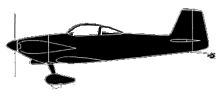
ASN Wikibase Occurrence # 167
This information is added by users of ASN. Neither ASN nor the Flight Safety Foundation are responsible for the completeness or correctness of this information.
If you feel this information is incomplete or incorrect, you can submit corrected information.
| Date: | Sunday 12 March 2000 |
| Time: | 10:51 |
| Type: |  Van's RV-3 |
| Owner/operator: | Private |
| Registration: | VH-BEM |
| MSN: | |
| Fatalities: | Fatalities: 1 / Occupants: 1 |
| Aircraft damage: | Destroyed |
| Category: | Accident |
| Location: | Toowoomba, QLD -
 Australia Australia
|
| Phase: | Initial climb |
| Nature: | Private |
| Departure airport: | Toowoomba, Queensland (TWB/YTWB) |
| Clifton, Queenland | |
| Investigating agency: | ATSB |
| Confidence Rating: |
On 12 March 2000, a group of pilots had arranged to conduct a fly-in at Clifton, Queensland. As part of their day's outing, they had also arranged for a visit to a collection of aircraft at Toowoomba. The accident pilot was to fly a single-seat RV-3 amateur-built aircraft on behalf of the aircraft owner. To re-familiarise himself with the aircraft, the pilot had conducted some local flying at Southport on the previous day.
Soon after the RV-3 became airborne during the departure from Southport for Toowoomba, the engine began to run roughly. The pilot landed the aircraft and operated the engine to clear what he suspected to be spark plug fouling. The subsequent takeoff was apparently normal, and the aircraft arrived at Toowoomba without further incident.
Following the visit to the aircraft collection, the pilots prepared for departure to Clifton. The pilot of the RV-3 taxied to the threshold of runway 11 for departure. Witnesses reported that the takeoff and initial climb were normal until the aircraft reached a height of about 200 ft, when the engine suddenly lost power.
The nose-attitude of the aircraft was observed to lower and the engine subsequently regained power. The aircraft then began a gentle climb and turned left. Witnesses reported that it appeared the pilot was attempting to manoeuvre the aircraft to land on the aerodrome. After the aircraft gained some altitude, the engine again lost power. The bank angle steepened and the nose-attitude lowered significantly. The aircraft's wings were then seen to level and the nose lifted to a near level attitude, however, the aircraft continued to descend at a high rate until impact on a playing field. The sides of the cockpit buckled outwards during the impact, allowing the fuselage behind the pilot to move forward, and the pilot's shoulder harness to slacken. He was no longer adequately restrained and received fatal injuries.
Sources:
1. http://www.atsb.gov.au/publications/investigation_reports/2000/aair/aair200000885.aspx
Revision history:
| Date/time | Contributor | Updates |
|---|---|---|
| 21-Jan-2008 10:00 | ASN archive | Added |
| 11-Apr-2014 05:51 | Dr. John Smith | Updated [Time, Operator, Total fatalities, Total occupants, Other fatalities, Location, Phase, Nature, Departure airport, Destination airport, Source, Damage, Narrative] |
| 10-Jun-2022 07:23 | Ron Averes | Updated [Location] |
Corrections or additions? ... Edit this accident description
The Aviation Safety Network is an exclusive service provided by:


 ©2024 Flight Safety Foundation
©2024 Flight Safety Foundation